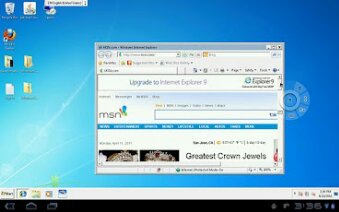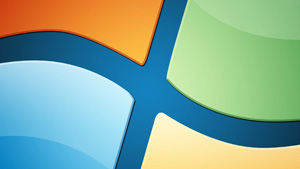Cool clouds
- Camera: SGH-i937
- Taken: 23 February, 2012
- Aperture: ƒ/2.65
- Focal length: 4.03mm
- ISO: 32
- Shutter speed: 1/1176s
- Title: ????????y

Even as kids reach adolescence, they need more than ever for us to watch over them. Adolescence is not about letting go. It’s about hanging on during a very bumpy ride.
~ Ron Taffel
![]()
Being in IT and working in an all Windows shop I would say that remote desktop is the number one used app on my PC. VNC is used a lot as well for connecting to PC’s but mostly I’m all about managing my servers using remote desktop. Most of that is done from VisionApp’s remote desktop software (but that’s for a different post). So, on my Asus Transformer Prime tablet (which I love by the way) one of the first things I searched for in the market place was a remote desktop client. I tried out a few but settled on Wyse Technology’s PocketCloud. Wyse has a number of products from thin clients to remote desktop clients and more.
I typically go with free apps because I don’t have an abundance of money and because I like to hop around OS platforms on the Tablet side so when I originally saw the $14.99 price tag I skipped it over. They do have a free version that doesn’t let you add more than one pre-configured remote desktop connection and does work well. But, I like to be able to pull out the tablet and quickly connect to whichever server I need to do some work on. I had used PocketCloud on the iPad as well and liked it there as well. The recent update added several useful features and it’s well worth taking a look at.

I’m sure you’ve seen these signature pads in many places. Doctor’s offices, dentists and maybe your local blood donation center.
They are USB or serial based devices and they require drivers for Windows to see them and for software to be able to talk to them.
I have a software application we use that needs the driver installed even if you aren’t using the signature pad. To save IT management time we have this application installed on a couple of Windows Server 2003 and Server 2008 servers running terminal services. When you install the drivers it puts them in a goofy place. In my case I was logged in as administrator so it went to:
C:\Documents and Settings\administrator\WINDOWS\SigPlus
So, what happens when a normal user logs onto the terminal services machine? They can’t see the sigplus.ocx dynamic link library and the application crashes. Cool huh?
To fix this you can give everyone read access to the SigPlus folder. There might be another way of fixing it, like moving the .ocx file and registering it in a different place, but I just tweaked the security on the folder and it worked.

I wanted to reboot all PC’s in a particular OU of our Active Directory structure. I found csvde which is a tool for exporting and importing data to and from Active Directory.
Once I got all of the computer names out and into a csv file I used the shutdown -i tool to past the computer names into and let it remotely reboot them.
Here are some sample csvde scripts for exporting various pieces of information:
Export everything (computers, users, groups etc. This could be a lot of records depending on your Active Directory so be careful.):
CSVDE -f exportFilename.csv
Export computer accounts from specified OU with only a few columns (just does dn, cn and name columns):
csvde -f ComputerNamesExport.csv -d “OU=OUName,DC=domain,DC=org” -r “(objectClass=computer)” -l “dn,cn,name”
– You can leave off the -l “dn,cn,name” and you’ll get all columns.
Export user accounts from whole domain with only the specified columns:
csvde -f \\server1\common\it\UserNamesExport.csv -d “DC=CBCO,DC=org” -r “(objectCategory=person)” -l “dn,cn,displayName,description,title,department,physicalDeliveryOfficeName,company”
– You can leave off -l and the rest to get all columns.

You can use this function to return the size of a specific folder:
Public Function FldrSize(ByVal dPath As String)
Dim size As Long = 0
For Each foundFile As String In My.Computer.FileSystem.GetFiles(dPath, FileIO.SearchOption.SearchAllSubDirectories, “*.*”)
Dim fInfo As New FileInfo(foundFile)
size += fInfo.Length
Next
Return size
End Function
This returns the number of bytes in the folder. I then feed that result to code found here to view that as megabtyes or gigabytes.
This function returns the total size of a drive and the free space of the specified drive:
Private Function GetSize(ByVal drive As String)
Dim parameter As String = “win32_logicaldisk.deviceid=””” + drive + “:”””
Dim diskSize As New ManagementObject(parameter)
Dim detailsString As String = “”
diskSize.Get()
detailsString = “Disk Space in ” + drive + ” is :” & diskSize(“Size”).ToString
detailsString = detailsString & vbCrLf & “<br>Free space in ” + drive + ” is :” & diskSize(“FreeSpace”).ToString
Return detailsString
End Function
Again, this returns the bytes and I use code found here to convert that to megabytes or gigabytes.

I’ve been in IT for several years now and for some reason I never knew this tool existed in Windows.
In the past I’ve used things like Sysinternal’s PSShutdown to remotely reboot or shut down a PC.
I found today that if you enter “Shutdown -i” at a command prompt you get a shutdown tool you can use to reboot or shutdown other PCs on the network.
I tried this on Windows Server 2003, Server 2008 and Windows 7 and it worked on all of them.
If you hold down shift when you right click on the command prompt icon and select “Run as a different user” you can launch it as a domain administrator.